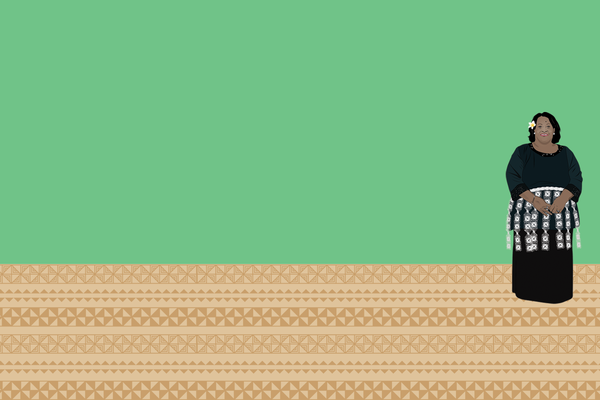Calling on Tongan Traditions: Ngatu
Lady Tunakaimanu Feilakepa is renowned and greatly respected for her traditional cultural knowledge in Tonga and across the Pacific. Here she kindly shares her knowledge on the creation and use of tapa cloth.
I began my visit by looking at Tapa (ngatu) within the collection that Miss Muriel Snell kindly donated to the Museum. There were three kinds that I will categorise the tapa into:
Category One
Large pieces of tapa that have been cut from a much larger piece made of 50 strips of tapa which we call a launima. Within the Miss Snell collection the tapa pieces mostly consist of four langanga (strips of tapa) or smaller. Most of them are of traditional stencils and designs such as manulua, hea and lei. The pieces of tapa that we found here must have been about 40-30 years old and they have lasted this long due to the use of traditional dyes and glue.
These traditional methods mean that the tapa lasts much longer than the modern tapas which are currently being made using imported dyes and glues which the insects seem to rapidly attack.
I was impressed with the soft texture of the old tapa and very little of it had been attacked by bugs. They would have been made by skilled women of Tongan villages. However the area of Ha’apai in which Miss Muriel Snell collected these items, is not known for their bark cloth. Instead they are known for their weaved mats and handicrafts, so I believe that these tapa cloths must have been traded in from the Tongatapu islands in the south of Tonga. They would have been exchanged for fine Ha’apai weaved mats as exemplified within this collection.
Tapa is made from the mulberry plant that is mostly grown on the islands of Tongatapu and ‘Vava’u. Recently however, it has been found that on the big island of Foa in the Ha’apai group of islands the mulberry plant now grows very well and the women of Ha’apai are beginning to make tapa using the mulberry plant from the island of Foa. However, I must say that for now they are still predominantly great weavers.

© Australian Museum
Category Two
The second type of tapa was the tapa made for table cloths. These were most likely made by Miss Snell’s students in afternoon craft classes. They are a mixture of traditional and European stencils.
Category Three
A very modern form of tapa that has been pressed by machines instead of beaten and is cut very small and painted specifically for tourists to take home. I took great delight in coming across this tapa as they were made by a late friend of mine named Amini Tuivai.
Having viewed the old tapa cloths in Miss Snell’s collection it has truly reminded me that it is better for us to go back to our traditional ways of making tapa.












